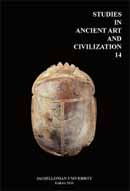The Great Hunt. Some remarks on symbolic and ritual significance of the hunt and chase motifs in Egyptian art
The Great Hunt. Some remarks on symbolic and ritual significance of the hunt and chase motifs in Egyptian art2
Author(s): Katarzyna Bodziony-SzwedaSubject(s): Archaeology
Published by: KSIĘGARNIA AKADEMICKA Sp. z o.o.
Summary/Abstract: It is a known fact in archaeology that animals have played a significant role in various aspects of human life since the dawn of mankind. Yet rarely can a culture be found that valued them more highly than the ancient Egyptians. According to some authors, no other ancient civilization fostered a closer relationship with the animal world (Germond and Livet 2001, 11). Literally every aspect of Egyptian life was connected to animals – they were avatars of the gods and beloved household companions, they served as providers of both food and amusement and were also a part of the ritualistic, symbolic and magical customs of the people of the Nile. As early as the Predynastic period the hunt and chase were already major motifs in Egyptian art and they remained so throughout the entire Pharaonic rule, becoming one of the canonical subjects of wall decoration in both tombs and temples, but also appearing on smaller works of art. It is now clear that, apart from being a means of providing nourishment and a pleasant pastime, hunting – whether actually performed or merely depicted in art – was also a symbolic activity.
Journal: Studies in Ancient Art and Civilization
- Issue Year: 2010
- Issue No: 14
- Page Range: 55-66
- Page Count: 12
- Language: English

